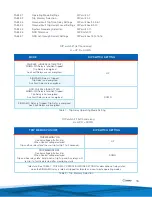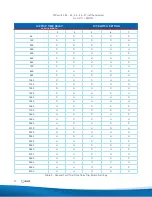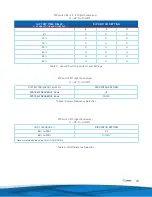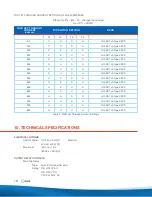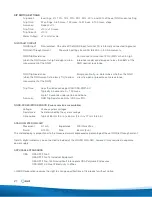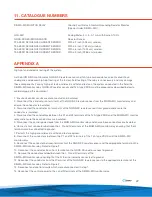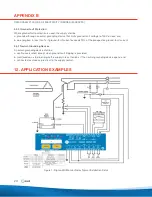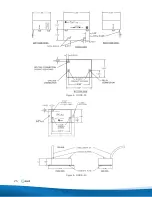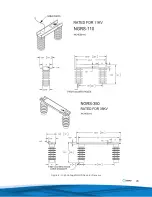
13
8. RELAY SETTINGS
All settings on the SIGMA-MD monitor relay are defined by means of a DIP Switch array located on the front panel of
the relay. Refer to:
• TABLE 1 for Trip Relay Operating Mode.
• TABLE 2 for Trip Memory ON/OFF.
• TABLE 3 for Ground Fault Trip Time Delay.
• TABLE 4 for Ground Fault Trip Current Level.
• TABLE 5 for System Frequency Selection.
• TABLE 6 for Neutral Grounding Resistor Tolerance Selection
• TABLE 7 for Neutral Grounding Resistor Let-Through Current
In these tables, DIP switch settings are either Up or Down designated U and D respectively.
8.1 TRIP RELAY OPERATING MODES
The SIGMA-MD monitor relay can be set for a shunt trip operating mode (not failsafe) or an undervoltage trip
operating mode (failsafe) operation with the trip relay operating mode dip switch.
Refer to TABLE 1 TRIP RELAY OPERATING MODE SETTING.
The trip relay is electrically held, i.e. when control power is off, the relay is de-energized. Note that this is irrespective
of the trip relay operating mode setting.
8.1.1 Shunt Trip Mode (Non-Failsafe)
In the shunt trip mode (non-failsafe), the trip relay remains de-energized (no trip) when control voltage is applied to the
SIGMA-MD monitor relay and the system is operating normally. The trip relay is energized (trip) when the measured
values of the ground fault current or NGR resistance exceed the threshold settings for the time specified.
The trip relay remains energized (trip) after a fault is qualified until the SIGMA-MD monitor relay is reset whether or
not the fault that caused the trip remains present on the system. The trip relay will be de-energized (no-trip) if control
voltage is removed.
When control voltage is applied the trip relay will at first be de-energized (no-trip) and the SIGMA-MD monitor
relay will start operating normally. If the trip memory option is OFF the trip relay will remain de-energized (no-
trip). However, if the trip memory option is ON and a trip state is stored in the non-volatile memory the trip relay
will be energized (trip) approximately 1 second after control voltage is applied and will remain energized (tripped),
regardless of whether a fault is present on the system.
The trip relay will be de-energized (no-trip) if the SIGMA-MD monitor relay is reset through a local or remote reset.
When reset, the SIGMA-MD monitor relay will resume monitoring of the system and, if a fault remains on the system,
will detect the fault and will re-trip, energizing the trip relay.

















